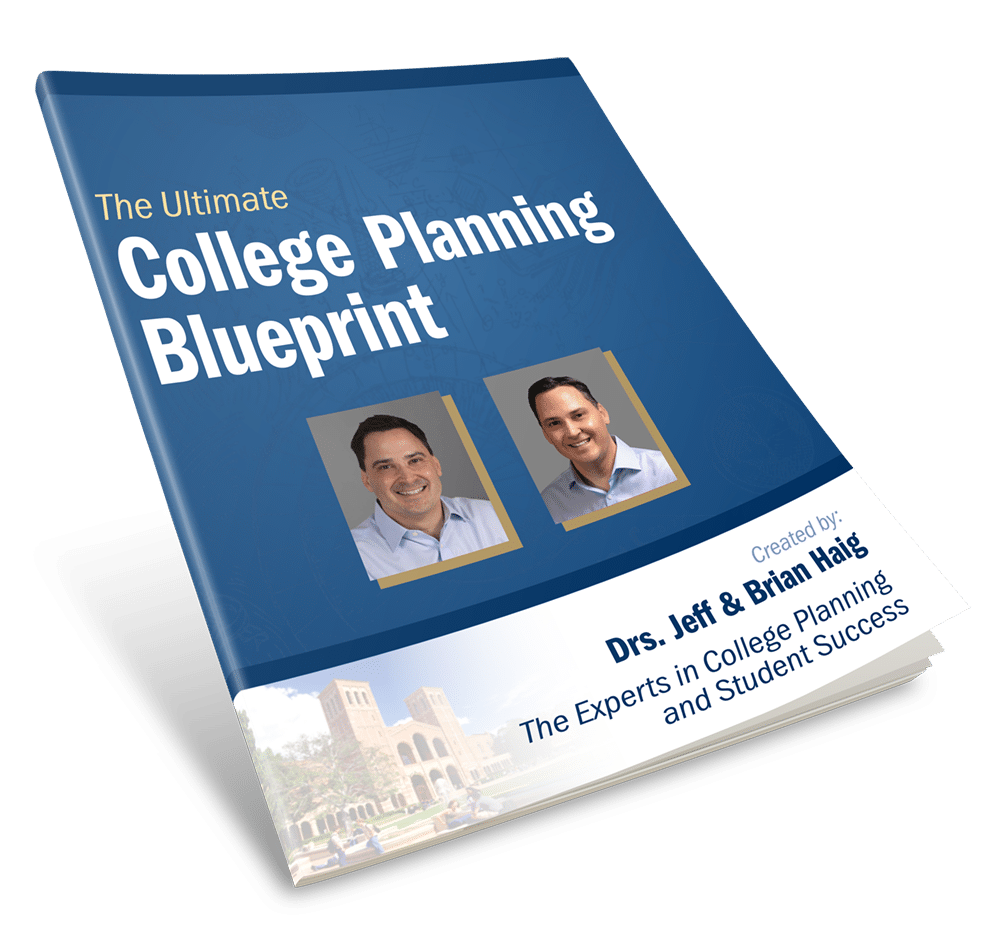Scholarships are an important financial aid option available to students to help pay for college expenses, and the best part is they don’t have to be repaid. There are thousands of scholarships available to students each year, awarded based on a number of factors such as academic performance, athletic ability, artistic talents, volunteering in an organization, unique background, and much more. In fact there are scholarships for almost any unique talent, skill, background, and accomplishment that it can only be beneficial for you to spend time learning about how they can play a role in saving you thousands of dollars to offset the high cost of college!
What is important to understand is that scholarships are not only awarded to students with the highest GPA or the most impressive sports record, but they are also awarded for all types of students. You just need to know how to look for them, and what strategies are most effective for winning them. Below are 9 important strategies for how to find and apply for scholarships, and most importantly, how to increase your chances of being chosen as a recipient.
1) Know How to Look for Scholarships
Scholarships can be found in many different places, both locally and nationwide. Locally, check with your high school guidance office, area businesses, clubs and community organizations (Rotary, Elks, American Legions, etc.), church, and places of employment of both the student and parent(s).
Nationwide scholarships can be found on scholarship databases and on college websites. Below are three websites commonly used to find scholarships:
Fastweb.com
Scholarships.com
CollegeBoard.com
There are many other types of scholarship search engines available. What is important is understanding how to navigate the scholarship search engines, and finding the right scholarship opportunities available.
2) Understand all the Different Scholarship Types Available
There are different types of scholarships available. It’s important to review all of the different types of scholarships to maximize the amount of free money you can be awarded for college. Below are the different types of scholarships you can look into:
Need-based Scholarships
These scholarships are awarded based on your parent’s financial background. The financial situation of the parents will be evaluated by the college and a financial aid package will be offered that will give the student need-based scholarships. There are different factors that are taken into consideration when determining financial need including the income of parents, cost of living, and the number of children enrolled in school in a household.
Merit Scholarships
These are scholarships given to those students who demonstrate excellence in a specific area. Merit scholarships can be awarded based on academic performance and test scores, but they can also be awarded based on talent in a specific area such as athletic or artistic ability. These scholarships can be partial or full ride.
College Specific Scholarships
A college might offer specific scholarships based on a student’s major or specific program such as engineering or art. These scholarships are usually given to students with a specific focus in an area and who show strength and success in this area. It’s ideal if a student can develop his/her talents early on because he/she can then be eligible for these types of scholarships.
Outside Scholarships
There are thousands of scholarships outside of colleges that students can apply to. These scholarships can be applied to the college the student attends. There are billions of dollars in free money available in this category offered by corporations, nonprofit organizations, individual donors, the military, outreach programs, and many others. These scholarships have a variety of criteria to enter including writing an essay, making a video, drawing a picture, or even simply putting your name in a hat, and so on. The criteria for each scholarship is based on the organization giving the scholarship and the guidelines they create.
3) Know the Best Time to Look for Scholarships
The best time to look for scholarships is as early as possible. You can even begin as early as 9th grade since there are some scholarships you can win as a freshman, sophomore, or junior. However, many scholarships are only available to high school seniors, and students already enrolled in college. But you don’t have to wait until senior year to start looking for scholarships when you will be already busy with college applications and the admissions process. Begin much earlier while you will have more time without the added pressures of essays, college application deadlines, and follow-up admission material that may be additionally requested when applying to colleges.
4) How Many Scholarships Should You Apply To?
Scholarship hunting is a numbers game. The more scholarships you apply to, the more money you can earn for college. Also, don’t avoid applying for a scholarship simply because you feel the requirements are too hard to complete, or you think there is no way you’ll win. The more difficult a scholarship competition is, the fewer the students who will apply. Lastly, don’t disregard scholarships with lower award amounts because fewer students usually apply to these scholarships.
5) Understand Who the Scholarship Committee is, and What They are Looking For
It is important that whatever scholarship you apply to, you know exactly what the scholarship committee is looking for when considering who they will choose as a recipient. Your scholarship application should be tailored to the desires and goals of the selection committee. Find out what the scholarship is about and write in a “voice” that will clearly articulate why you feel you are the best candidate for this scholarship.
6) Presentation and Proofreading Are Important
How you present your scholarship application is important. Be clear and concise! If the scholarship application requires an essay, don’t exceed the word count, or pages allowed. Application readers have to possibly read hundreds of applications and if your essay is too long, it may not get read. Also, don’t submit a sloppy application as it will leave a bad impression. This means properly following instructions, and filling out all the necessary parts of the application, adhering to guidelines and any parameters set forth. Also, if there is an in-person interview requested, look sharp! Dress as if you are going to a job interview looking professional, well-dressed, and well-groomed. Image/perception is key to making a great impression.

Lastly, it is important to always proofread every part of your scholarship application. You should proofread your application and also get a family member or friend to proofread your application. Getting a second person to proofread may allow things to be found that were not initially visible to you.
7) Keep on Top of Deadlines
There are many different types of scholarships, and unfortunately, each scholarship has its own deadline. And to make matters more overwhelming, it may seem like there is no rhyme or reason for when deadlines fall, which makes keeping track of them a potentially tedious process. Fortunately, there are some general guidelines to follow that can help you stay on track with important scholarship deadlines.
Typically the bigger the scholarship, the sooner the deadline. Scholarships that offer lots of money from the big companies including Coca-Cola, Best Buy, the Dell Foundation, Gates Millenium Scholarships have deadlines that are among some of the earliest you will see—as early as October in some instances. This is because these scholarships are highly competitive, and usually receive thousands of entries. Though these scholarships are really competitive, don’t let this discourage you. If you feel you are a good candidate, put forward your best effort to submit an entry because if you win, the payoff can sometimes be substantial!
Local scholarships in many instances have early deadlines. Though many scholarship deadlines occur between March and May, many local scholarships through your local service organization, church, or community foundation can have earlier deadlines. Typically local scholarships will offer lower amounts of money, but if you are awarded a few of these scholarships, the award money can quickly add up—so it’s important not to overlook local scholarships, and to keep track of deadlines.
The FAFSA deadline is always the same for everyone—June 30th. FAFSA stands for Free Application for Federal Student Aid, and it is a form that families fill out to apply for federal grants, loans, and work-study funds. The FAFSA also provides crucial information for many scholarship applications, especially those with a need-based component. In fact, completing the FAFSA is required for many scholarship applications, so completing it will ensure you will be ready for every scholarship opportunity you may find. The FAFSA is administered by the U.S. Department of Education, which provides more than $150 billion in student aid each year. The deadline for the FAFSA is important because nearly every student is available for some type of financial aid.
Keeping track of scholarship deadlines is crucial, and it is therefore important to create a “scholarship schedule” that you can track using a calendar. Marking each scholarship deadline on a calendar and keeping track of all the different deadlines will ensure that you don’t miss a deadline.
Also, once you’ve marked all your scholarship deadlines on a calendar, you’ll be able to search for new scholarships more efficiently. You’ll be able to assess which scholarships are right for you, the dollar figure awarded, and if a potential scholarship is worth your while, and time/effort needed to submit an application. For instance, you can determine if a potential $200 scholarship due at the same time as a couple other offers is worth your while when a $1,000 scholarship opportunity has a similar deadline and is asking you to submit an essay similar to one you’ve already written for another scholarship you may have submitted earlier.
8) Stay Organized
Stay organized. Remember that most scholarship requirements include sending letters of recommendation, transcripts, financial records, and other documents. You’ll need to prepare these items several weeks in advance of the due date and take the time to ensure everything is ready to go well before the deadline. Create individual files for each application and get into the habit of tracking your scholarship due dates on a calendar. This will make it easier to submit all application materials well ahead of schedule.
9) Be Passionate!
Take each scholarship you apply for seriously and be passionate about the process. Be confident about filling out your scholarships and doing your best to represent yourself. Work hard, focus, and be willing to put in a solid effort in looking for and applying for scholarships, because your passion, enthusiasm, commitment, and dedication can pay off with thousands of dollars in free money for college!
In Success & Achievement,
Dr. Jeff & Dr. Brian Haig



